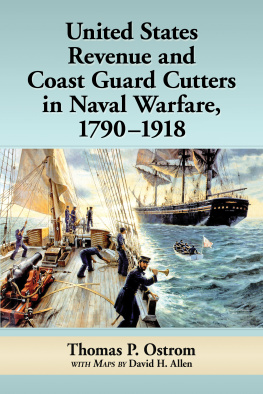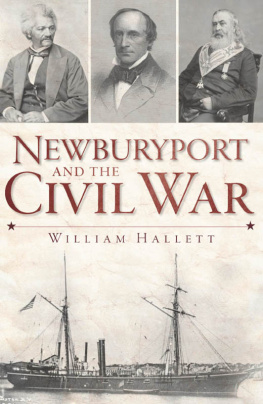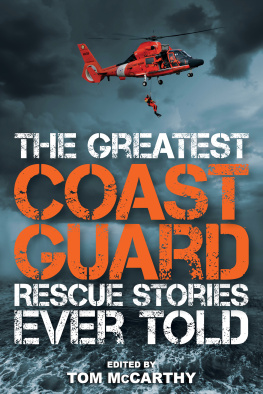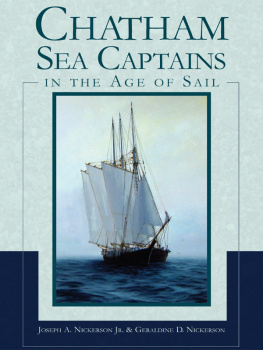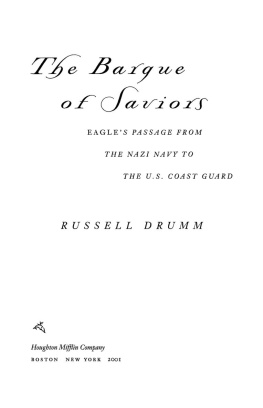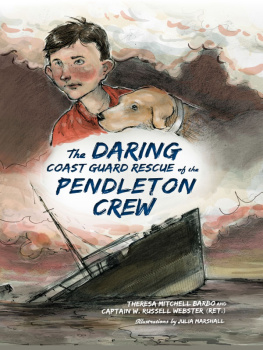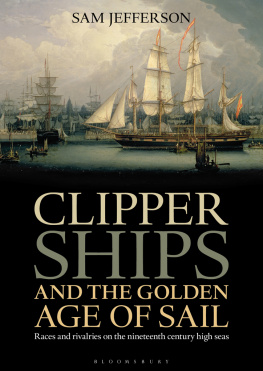


Published by The History Press
Charleston, SC
www.historypress.net
Copyright 2017 by Dyke Hendrickson
All rights reserved
Front cover, top: Photo by Brian Tague; courtesy of the U.S. Coast Guard; bottom: View of Newburyport Harbor and Beyond, Circa 1850, by Richard Burke Jones, used with permission.
First published 2017
e-book edition 2017
ISBN 9781439660140
Library of Congress Control Number: 2016945812
print edition ISBN 978.1.46713.587.0
Notice: The information in this book is true and complete to the best of our knowledge. It is offered without guarantee on the part of the author or The History Press. The author and The History Press disclaim all liability in connection with the use of this book.
All rights reserved. No part of this book may be reproduced or transmitted in any form whatsoever without prior written permission from the publisher except in the case of brief quotations embodied in critical articles and reviews.
Nautical Newburyport captures in text and images the genuine adventure, risk taking and pure courage that propelled so many from Newburyport worldwide and made this community one of the nations leading coastal towns of the eighteenth and nineteenth centuries. Newburyport history is a truly remarkable collection of maritime stories, and in his fascinating new book, author Dyke Hendrickson does his finest in bringing together a cohesive understanding of its key plotlines. He traces the story from the founding of the town itself to the colonial shipbuilding mecca it becameand its recognition as the birthplace to Americas oldest continuously operating maritime service, now known as the U.S. Coast Guard.
Michael Mroz
Executive Director
Custom House Maritime Museum
Newburyport
CONTENTS
ACKNOWLEDGEMENTS
Historians and librarians are invariably generous with their time and knowledge, and I want to recognize numerous people for their help and cooperation.
I thank artist Richard Burke Jones for permission to use an image of his brilliant painting depicting historic Newburyport Harbor on the cover, View of Newburyport Harbor and Beyond, circa 1850. He is both a knowledgeable historian and a gifted painter, and his portrayal permits us to imagine what a maritime community looked like years ago.
Appreciation is extended to Michael Mroz, executive director of the Custom House Maritime Museum, and to Susan Edwards, who heads the Museum of Old Newbury. They were generous in sharing paintings, photos, documents and other resources as the book came together.
At the archives of the Newburyport Public Library, Sharon Spieldenner and Jessica Gill were helpful in the search for documents and images.
I want to acknowledge the useful suggestions from those in the local history community, including Ghlee Woodworth, Scott Nason, Emily Shafer, Kevin MacDonald, Jason Roberts, Ken Jackman, Moss Quinlan, Joe Callahan, Bill Plante, Marge Motes and Skip Motes.
Thanks also go to John Macone, editor of the Daily News, who has valued stories about the past as well as the present.
Photographer Bryan Eaton provided valuable help in identifying useful historical images and capturing present-day photos of the grandeur of High Street, the beauty of the waterfront and the stolid value of our local Coast Guard station.
INTRODUCTION
THE BIRTH OF A
MARITIME COMMUNITY
Newburyport is a scenic coastal community north of Boston with a dynamic maritime history. It is smalltodays population is just 17,800but it has been mighty. In the eighteenth and nineteenth centuries, it was one of the most productive shipbuilding centers in New England. It supported scores of shipyards, and it sent hundreds of vessels to sea. Those who did not go into maritime trade often chose to fish the Atlantic, and early crews caught tons of cod, haddock, mackerel and even the occasional giant tuna. When the colonies were seeking independence, this community was among the most patriotic on the Atlantic coast. Newburyport sent privateers to fight the British during the Revolutionary War and the War of 1812.
Later, it built cutters, including the Massachusetts, to collect customs revenues, and as a result, it has been recognized as the birthplace of the Coast Guard. One of the nations first fighting ships, the Merrimac, was built here in 1798. When times were good, it was a center of trade with Great Britain and France. Captains guided packet ships across the Atlantic. Also, they developed productive routes to the West Indies, and involvement in the rum trade helped make the community rich. One period of prosperity was between 1783 and 1807, and many mansions on historic High Street were built during this golden time.
Larger vessels would travel as far as India and China to develop trade.
Newburyports remarkable success was achieved despite the circumstance that it had one of the narrowest, shallowest and most tumultuous harbor entries on the East Coast. Competing port communities like Portsmouth, Salem and Boston featured wide entrances and deep water that permitted the largest of ships to enter and exit, laden with trade goods.
The Joshua Bates traveled the globe, and captains had to be extremely competent to get from port to port. Newburyport Archival Center of the Newburyport Public Library.
But Newburyports entrance was only several hundred yards wide, and sandbars often hampered the travel of the largest ships. Also, the community is on the Merrimack River, and when the fast-moving current met an incoming tide, the harbor was very difficult to navigate.
Prevailing west winds also provided challenges to ships trying to enter before the age of steam. Perhaps because mariners here faced a narrow harbor, shallow water, a surging river and strong tidal action, they had to be motivated to prosper here, and they were. From the late eighteenth century through much of the nineteenth, this small but tenacious community was a national leader in shipbuilding, patriotic defense, vigorous international trade and blue-water fishing. Today, it remains a maritime community. Close to two thousand pleasure boats are registered in Newburyport and nearby Salisbury each summer. Hundreds of day-trippers or month-long leisure yachtsmen who tie up also enjoy the harbor and the community.
But Newburyport still keeps its eye on history. In May 2016, it hosted the 170-foot-long ship El Galeon, a Spanish vessel that acts as a bilingual floating museum; in 2012, it welcomed the Bounty on one of that vessels last calls before sinking in the stormy Atlantic several months later. Newburyport is a maritime community today, but it took some political maneuvering to formally achieve that distinction. It was originally a section of the town of Newbury. As was the case with many seventeenth- and eighteenth-century colonial towns, Newburys original territory was huge by todays standardsit encompassed what today is Newbury, West Newbury and Newburyport. In 1764, a section of Newbury called Watersidetodays Newburyportwas emerging as a community of traders and mariners. Many boatyards lined the Merrimack River.



